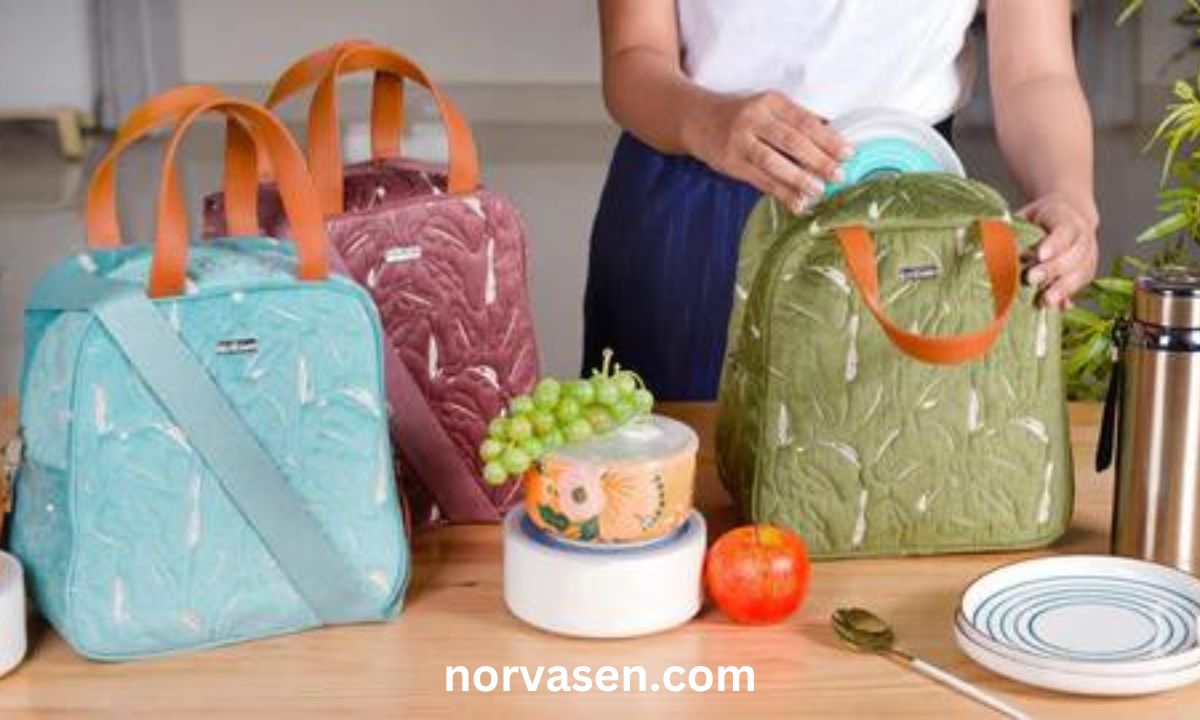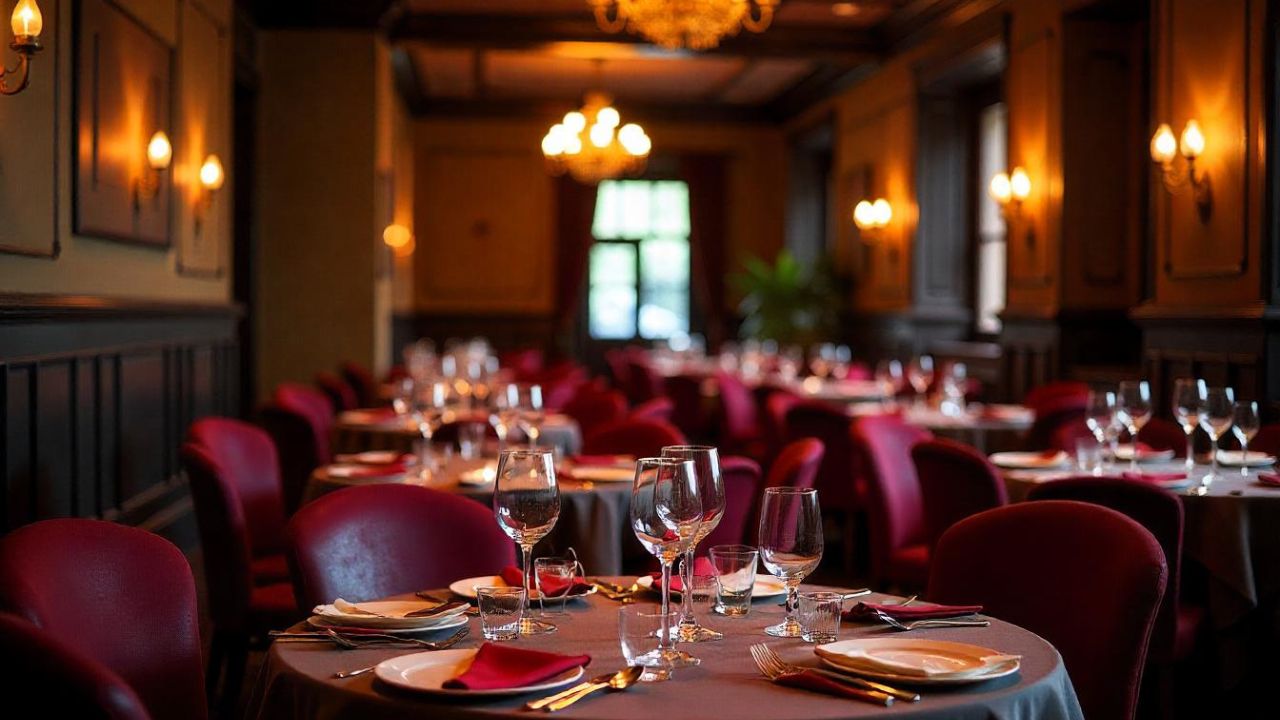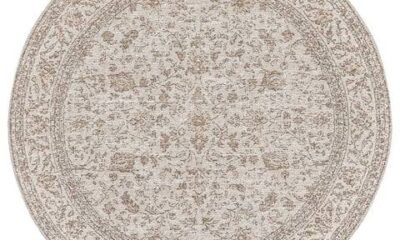Lifestyle
Tips on Choosing the Perfect Lunch Bag

Choosing the right lunch bag might seem simple, but it’s more important than you might think. A good lunch bag keeps your food fresh and safe to eat, saves you money, and makes life easier. If you’re planning on buying a lunch bag and looking for tips on how to choose one, then you’re in the right place. This guide will teach you some tips to help you pick the perfect lunch bag.
1. Consider the Size and Capacity
When thinking about the size and capacity of your lunch bag, it’s crucial to assess your daily food and beverage needs. If you typically pack hearty meals or carry multiple items, opting for a larger bag ensures you have enough space to accommodate everything comfortably.
On the other hand, if you prefer smaller portions or tend to pack light, a compact bag will suffice. Consider your lifestyle and eating habits to determine the most suitable size for your lunch bag.
2. Insulation and Temperature Control
Insulation plays a vital role in preserving the freshness and safety of your food. Beyond the basic function of carrying your lunch, a well-insulated bag ensures that your meals remain at the appropriate temperature until you’re ready to enjoy them. Foam insulation, often found in the lining of lunch bags, provides effective temperature regulation by preventing heat transfer.
Additionally, bags with aluminum foil lining or thermal insulation layers offer enhanced insulation properties, maintaining cold or hot temperatures for extended periods. Prioritize insulated lunch bag to safeguard the quality of your food throughout the day.
3. Durability and Material
The durability of your lunch bag directly impacts its longevity and ability to protect your food. Opt for bags crafted from robust materials such as:
- Polyester
- Nylon
- Neoprene
These materials are renowned for their resilience and resistance to wear and tear. Polyester boasts exceptional strength and resistance to wrinkles, making it an ideal choice for enduring daily use.
Nylon, a lightweight yet sturdy material, offers excellent durability and water resistance, ensuring your lunch remains protected even in adverse weather conditions. Neoprene, recognized for its insulating properties, not only maintains the temperature of your food but also provides long-lasting durability.
When assessing the durability of a lunch bag, inspect critical components such as stitching, zippers, and handles to ensure they can withstand the rigors of everyday use.
4. Style and Design
While functionality remains paramount, the style and design of your lunch bag contribute to both its aesthetic appeal and practicality. Choose a bag that reflects your personal taste and complements your lifestyle, whether you prefer sleek and minimalist designs or vibrant patterns. To enhance convenience and organization, look for features such as:
- Multiple pockets
- Compartments
- Adjustable shoulder straps
Additionally, consider practical design elements like reinforced handles and waterproof exteriors to withstand daily wear and tear. By prioritizing both style and functionality, you can find a lunch bag that not only suits your individual preferences but also meets your practical needs.
5. Easy to Clean and Maintain
Regular cleaning and maintenance are essential for preserving the hygiene and longevity of your lunch bag. Follow the manufacturer’s instructions for cleaning, which typically involve hand washing with mild detergent and air drying to prevent damage.
For stubborn stains or odors, consider using gentle disinfectants or baking soda to effectively remove them without compromising the integrity of the bag. Pay special attention to insulated compartments and linings, ensuring thorough cleaning to prevent the buildup of bacteria or mold.
By adopting proper cleaning and maintenance practices, you can prolong the lifespan of your lunch bag and ensure it remains in pristine condition for years to come.
6. Eco-Friendly Options
In addition to prioritizing functionality and durability, choosing an eco-friendly lunch bag aligns with sustainable living practices and reduces your environmental footprint. Opt for bags crafted from recyclable materials such as recycled polyester or organic cotton, which minimize waste and promote resource conservation.
Avoid single-use plastics and disposable bags in favor of reusable alternatives, contributing to the reduction of plastic pollution in the environment.
7. Brand Reputation and Reviews
When selecting a lunch bag, researching reputable brands and reading customer reviews provide valuable insight into the product’s quality and performance. Look for brands with a proven track record of producing high-quality, durable lunch bags that meet customer expectations.
Consider factors such as warranty coverage, customer service reputation, and return policies to ensure a seamless purchasing experience. By leveraging the experiences and feedback of other consumers, you can make an informed decision and select a lunch bag that delivers on its promises.
8. Budget Considerations
While budget considerations are important, prioritize value and quality over price when investing in a lunch bag. Set a realistic budget based on your needs and preferences, considering factors such as:
- Material quality
- Construction
- Additional features
While it may be tempting to opt for the cheapest option available, investing in a higher-quality bag offers greater durability and longevity, ultimately saving you money in the long run. Find a lunch bag that matches your budget without sacrificing performance or durability by balancing price and quality.
Benefits of Using a Lunch Bag
Lunch bags are practical tools for preserving food quality, reducing waste, and offering convenience:
Preservation of Food Quality
Lunch bags maintain food freshness by providing insulation and protection from external elements like temperature fluctuations. This ensures that meals remain tasty and safe to eat, reducing the risk of foodborne illnesses.
Reduction of Food Waste
Using a lunch bag minimizes the need to discard uneaten portions of meals, contributing to overall food waste reduction. This practice saves money and promotes sustainable consumption by preventing unnecessary landfill contributions.
Cost Savings
Packing meals in a lunch bag instead of dining out or buying pre-packaged options leads to long-term savings. Additionally, investing in a durable, reusable lunch bag eliminates the need for disposable containers, further reducing expenses.
Convenience and Portability
Lunch bags offer hassle-free transportation of meals to work, school, or outings. Their compact design allows easy fitting into backpacks or bags, ensuring access to nutritious meals on the go.
Customization and Meal Planning
With ample space and compartments, lunch bags facilitate customized meal packing according to dietary needs and preferences. This flexibility supports adherence to specific diets and simplifies weekly meal prep routines.
Pack Smarter, Eat Fresher, Live Better!
Remember, your lunch bag is not just a container for your food – it’s a daily companion that helps you stay healthy, save money, and reduce waste. By choosing a lunch bag that suits your needs and preferences, you’re not only investing in your own convenience but also making a positive impact on the environment.
Lifestyle
Bouquet for Mom: Create Unforgettable Moments with Elegant Arrangements

Mothers are the embodiment of love, care, and sacrifice. They have always been there to nurture, support, and stand by us through every challenge. To express our gratitude and love, what could be better than a thoughtfully chosen bouquet? A beautiful bouquet for mom can convey your heartfelt emotions and make her feel truly special. At Florans, we offer a wide selection of stunning floral arrangements that are perfect for celebrating your mom on any occasion.
The Significance of Giving Flowers to Mom
Flowers have always been a symbol of love, appreciation, and celebration. They have a unique ability to convey emotions that words often cannot. Giving a bouquet of flowers to your mom is a timeless tradition that shows how much you care. The vibrant colors and fragrant blooms add a touch of elegance and beauty to any occasion, making your mom feel cherished and loved.
Popular Flower Choices for Mom
When selecting flowers for your mom, it’s essential to choose blooms that symbolize love, gratitude, and admiration. Here are some popular flower choices for mom:
- Roses: Roses are a classic choice for expressing love and appreciation. Pink roses symbolize gratitude and admiration, while red roses represent deep love and respect. White roses signify purity and new beginnings.
- Lilies: Lilies are known for their elegance and beauty. They symbolize purity, commitment, and a sense of renewal, making them an excellent choice for bouquets for mom.
- Tulips: Tulips are versatile and come in various colors. They symbolize perfect love and are an excellent choice for expressing heartfelt emotions.
- Orchids: Orchids are exotic and unique, symbolizing strength, beauty, and grace. They are a great choice for a sophisticated and elegant bouquet for mom.
- Peonies: Peonies are lush and full, representing prosperity, good fortune, and a happy life. They are perfect for celebrating the incredible women in your life.
Tips for Selecting the Perfect Bouquet for Mom
Choosing the perfect bouquet for mom involves considering her preferences, the significance of the flowers, and the overall presentation. Here are some tips to help you select the ideal bouquet:
- Consider Her Favorite Flowers: If you know your mom’s favorite flowers, incorporating them into the bouquet adds a personal touch and shows that you put thought into the gift.
- Select Meaningful Blooms: Choose flowers that symbolize love, gratitude, and admiration to convey your sentiments effectively.
- Choose a Cohesive Color Scheme: Opt for a color scheme that complements your mom’s taste and style. This adds a coordinated and polished look to the bouquet.
- Include a Mix of Flowers: Create a dynamic and visually appealing bouquet by including a mix of flowers with different shapes, sizes, and colors.
- Add Personal Touches: Consider adding a ribbon in your mom’s favorite color or a personalized note to make the bouquet even more special.
Making Every Day Special with Florans
At Florans, we take pride in creating stunning bouquets that capture the essence of your love and appreciation for your mom. Our expert florists carefully select and arrange each bouquet to ensure it conveys the emotions you feel. Whether you’re looking for a traditional bouquet of roses or an exotic arrangement of orchids, we have a wide selection of flowers to choose from.
If you’re unsure which flowers to choose, our team is here to help. We can provide personalized recommendations based on your mom’s preferences and the occasion. With our reliable delivery service, you can rest assured that your bouquet will arrive fresh and on time, ready to make your mom’s day even more memorable.
Conclusion
Choosing a bouquet for mom is a thoughtful way to show your love and appreciation. By selecting meaningful and elegant blooms, you can convey your heartfelt emotions in a way that words often cannot. For a stunning selection of flowers and reliable delivery service, visit Florans and make any day special for your mom.
Lifestyle
How Sunscreen Spray in Aerosol Cans Works & Why It’s a Game Changer

Sunscreen is essential for protecting the skin from harmful UV rays, and aerosol cans have made application quicker and more efficient. With a simple press of a button, these cans deliver an ultra-fine mist that ensures even coverage and effortless sun protection. But how do they actually work? And what makes them stand out from other sunscreen formats? In this guide, we’ll break down everything you need to know about sunscreen spray in aerosol cans, including practical tips and lesser-known hacks to enhance your sun care routine.
Understanding the Science Behind Aerosol Can Sunscreen
The effectiveness of an aerosol sunscreen spray lies in its innovative delivery system. Unlike traditional lotions that require rubbing, an aerosol can disperses the sunscreen as a fine mist, allowing for a quick and even application. Here’s what’s inside:
- Sunscreen Formula – The active UV-blocking ingredients.
- Propellant – A pressurized gas that pushes the formula out in mist form.
- Aerosol Valve – This component controls the flow and ensures a smooth, consistent spray.
When the nozzle is pressed, the propellant forces the sunscreen through the aerosol valve, transforming it into a mist that settles evenly on the skin. This not only makes application easier but also improves absorption.
Why Choose Aerosol Can Sunscreen?
Compared to lotions and sticks, aerosol can sunscreens provide several benefits:
- Fast Application – No need to rub it in excessively.
- Even Coverage – The mist ensures uniform distribution, reducing missed spots.
- Reaches Difficult Areas – Ideal for covering your back and shoulders without assistance.
- Lightweight & Non-Greasy – Leaves a breathable finish on the skin.
Expert Tips for Using Aerosol Sunscreen Effectively
To maximize the benefits of aerosol sunscreen, follow these best practices:
- Shake Well Before Use – This ensures the sunscreen and propellant mix properly.
- Hold the Can 6 Inches Away – Maintaining the right distance allows for even coverage.
- Apply Generously – A quick spritz may not be enough; ensure full coverage.
- Reapply Every Two Hours – Especially after swimming or excessive sweating.
- Use in a Ventilated Area – This prevents inhaling excess spray.
- Rub It In – Though the mist settles on the skin, rubbing enhances absorption.
Hidden Hacks for Sunscreen Spray Users
Want to get the most out of your aerosol sunscreen? Try these insider tricks:
- Apply Before Heading Outdoors – Let it dry for a few minutes for better adherence.
- Use for Hair & Scalp Protection – A quick mist shields your scalp without making hair greasy.
- Store in a Cool Place – This prevents overheating and keeps the can in optimal condition.
- Layer for Extra Protection – Applying a second coat boosts effectiveness.
- Test for Even Coverage – Spray onto a mirror or your hand first to check the mist pattern.
Frequently Asked Questions About Aerosol Can Sunscreen
Got questions? Here are the answers to common concerns:
1. Is Sunscreen Spray in an Aerosol Can as Effective as Lotion?
Yes, when applied correctly. Be sure to use enough product and rub it in for full protection.
2. Can I Spray Sunscreen Directly on My Face?
It’s better to spray onto your hands first and then apply to avoid inhalation.
3. Do Aerosol Cans Harm the Environment?
Most modern aerosol cans do not contain harmful CFCs, making them more eco-friendly.
4. How Should I Store My Aerosol Can Sunscreen?
Keep it in a cool, dry place away from direct sunlight and high temperatures.
5. What Should I Do If the Nozzle Gets Clogged?
Rinse it under warm water to clear any blockages.
6. Can I Travel with an Aerosol Can of Sunscreen?
Yes, but travel-size cans (under 3.4 oz or 100ml) are required for carry-ons on flights.
7. Does Sunscreen Spray Expire?
Yes, typically after 2-3 years. Always check the expiration date before use.
8. How Do I Ensure an Even Application?
Use a steady, sweeping motion and rub it in for better absorption.
9. What Is an Aerosol Valve, and Why Is It Important?
The aerosol valve regulates the misting process, ensuring consistent spray patterns.
10. Where Can I Find High-Quality Aerosol Can Components?
Reliable aerosol can suppliers provide advanced components to ensure efficient and smooth product dispensing.
Final Thoughts
Aerosol can sunscreen sprays have transformed sun protection by making application quicker, more convenient, and highly effective. By understanding how they work and applying them correctly, you can enjoy worry-free sun exposure. Whether you’re at the beach, hiking, or just out for a stroll, proper sun care is crucial for maintaining healthy skin.
Lifestyle
Things to Consider Before Hiring a Function Room in Sydney

When you’re planning a special event, be it a wedding, corporate function, or a social gathering, one of the most important decisions you’ll make is choosing the right venue. In Sydney, with its vast selection of function rooms, it can be overwhelming to select the perfect space that meets your needs. So, what do you need to consider before signing on the dotted line? This article breaks down the essential factors that can help you make an informed decision and ensure your event runs smoothly from start to finish.
Things to Consider Before Hiring a Function Room in Sydney
Sydney offers a wide variety of function rooms, each catering to different types of events. The key to making the right decision lies in understanding your event’s needs and matching them to the right venue. Below, we explore some critical factors to consider before booking a function room.
Location and Accessibility
The location of the function room plays a crucial role in the success of your event. If it’s difficult to access or far from where your guests are located, it could result in a low turnout. When choosing a venue, consider the following:
Proximity to Major Landmarks
Is the function rooms hire Sydney centrally located? Being close to major transport hubs, landmarks, or popular areas of Sydney can make it easier for your guests to find the venue. Consider whether you want the venue to be near Sydney’s bustling city center, or if a more secluded location would suit your needs.
Parking and Transportation
It’s also important to evaluate parking availability and the proximity to public transportation. Will your guests be able to find convenient parking, or should the venue be accessible by bus or train? Ensuring easy transportation options is key to avoiding any logistical headaches on the day of the event.
Size and Capacity of the Room
A function room should comfortably accommodate your guests without feeling too cramped or too spacious. It’s essential to select a venue that matches your expected guest list.
Small Events vs Large Events
For smaller events like intimate gatherings or corporate workshops, you don’t need a huge room. However, larger events such as weddings or parties will require more space to create an inviting atmosphere. Always make sure that the venue can comfortably hold the expected number of guests.
Flexibility in Room Arrangement
Another factor to keep in mind is the flexibility of the room layout. Depending on your event type, you might need to adjust the seating arrangements or have a stage for presentations. A venue that allows you to customize the room setup can be a great asset.
Amenities and Facilities
The amenities available at the function room can greatly enhance the experience of your event. Make sure to ask about the following features:
Audio-Visual Equipment
If you’re planning a presentation, conference, or live performance, having access to audio-visual equipment is vital. Many function rooms provide AV services, including microphones, projectors, screens, and even tech support. Always confirm that the venue is equipped with what you need.
Catering and Food Options
Food and drink play a huge role in the overall success of your event. Does the venue provide catering services, or will you need to arrange an external caterer? Ensure the venue offers a menu that suits your event’s theme and dietary requirements. You might also want to inquire about customizable options to make the catering unique to your event.
Budget and Pricing Structure
Your budget will likely be one of the most significant factors when choosing a venue. Function room pricing varies greatly depending on location, size, and amenities. Be upfront about your budget and make sure the venue offers value for money.
Hidden Fees and Costs
Pay attention to additional fees that might be hidden in the fine print. Some venues charge extra for cleaning, security, equipment, or overtime. Be clear about all costs upfront to avoid any surprises when the bill arrives.
Negotiating Prices and Packages
Don’t be afraid to negotiate with the venue! Many function rooms offer package deals that include various services like catering, decorations, and entertainment. Asking for discounts or bundled services can help you stay within budget.
Reviews and Reputation
Before finalizing your decision, always research the venue’s reputation. The best way to assess the quality of a function room is through customer feedback.
Customer Feedback
Check reviews on websites like Google, Yelp, and Facebook, where people share their experiences. Look for venues that consistently receive high ratings for their service, location, and overall experience. Positive feedback from previous clients can give you peace of mind.
Word of Mouth and Recommendations
Sometimes, word of mouth can be even more helpful than online reviews. If someone you know has hosted an event at the venue, ask them for their honest opinion. Personal referrals are often more reliable than anonymous reviews.
Additional Considerations
While the factors mentioned above are the main things to consider, there are other elements to keep in mind to ensure a successful event.
Ambiance and Atmosphere
The overall atmosphere of the venue will play a significant role in setting the tone for your event. Does the venue match the vibe you’re going for? Whether it’s modern, classic, or quirky, the ambiance should align with the event theme.
Safety and Accessibility
Make sure that the venue complies with all safety regulations. Check for emergency exits, first-aid facilities, and whether the venue is accessible for people with disabilities.
-

 Education6 months ago
Education6 months agoMastering Excel: Your Comprehensive Guide To Spreadsheets And Data Analysis
-

 Tech9 months ago
Tech9 months agoHow To Choose The Best Forex Trading Broker?
-

 Business1 year ago
Business1 year agoExploring the Rental Market: Properties for Rent in Malta
-

 Blog6 months ago
Blog6 months agoArab MMA Fighters Shine Bright: Meet the Champions of PFL MENA
-

 Travel10 months ago
Travel10 months agoExperience the Best Desert Safari Dubai Offers!
-

 How-To Guides1 year ago
How-To Guides1 year agoComprehensive Guide to Cockwarming: Enhancing Intimacy and Connection
-

 Home Improvement1 year ago
Home Improvement1 year agoEco-Friendly Round Rug Options for Sustainable Living in NZ
-

 Apps and Games1 year ago
Apps and Games1 year agoDiscover Tickzoo: The Ultimate Platform for Video Content Lovers and Creators
